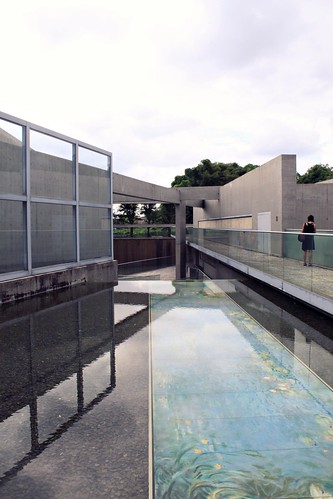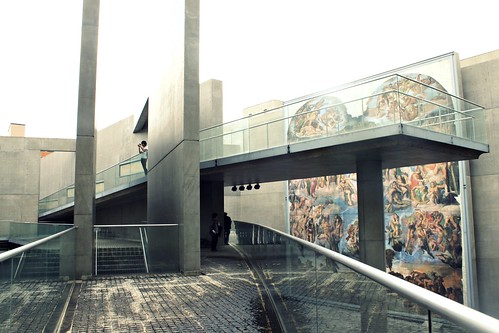Few structures on Earth live more on a basis of performance than the two shrines at Ise, both of whose entire existence is experienced, from a human standpoint, at a great distance and impeded by both a series of physical borders and strict policing—an existence punctuated only by a performance held every twenty years, and but a few others lesser processes held at other intervals. The process of this twenty-year cycle involves the Japanese government rebuilding the entirety of the two shrines and all built structures in their constituent compounds, including 125 distinct shrines and all bridges, at an exorbitant cost drawn from imperial funds, the most recent of which took place in 1993.
 |
| Ilicit photo of the NEIKU |
The original conception of the structures, their continued use, and their reconstruction are all a mater of performative processes, in which, arguably, the only purpose of the architecture is to affect public spectacles and performances, or else to indicate that they occur. The lay people are not privy to the whole appearance of the structures, required to stand behind a series of high, opaque fences and pray facing a gate within which special white silk drapes obstruct the view of the shrines. Visitors are not permitted even to take photos from their distant vantage point outside of the fence, regardless of the fact that from that area, the shrine is not visible to begin with. No one sentient being in the entire universe but the highest ranking member of the Japanese Shinto religion and the Emperor himself may lay eyes on the contents of these two shrines. The objects themselves are also entirely ceremonial in nature, representing objects bestowed upon the Japanese land at its mythical conception several millennia ago by various
kami, a polytheistic spirit-god. Just as with the Heian Complex and the Villa Katsura, those structures which are attached to the Imperial Japanese government are not, in most senses, public property. And yet, as exclusive as the structures themselves are, let alone their contents, they drawn vast crowds and attention from the public, the two Ise shrines sharing in excess, on average, over 10 million visitors annually (14 170 000 in 1995). Historical accounts, such as the
Daijingu shozojiki which recounts a
Kanname Festival in 934, even record attendance in excess of 100 thousand for the single event alone.
















